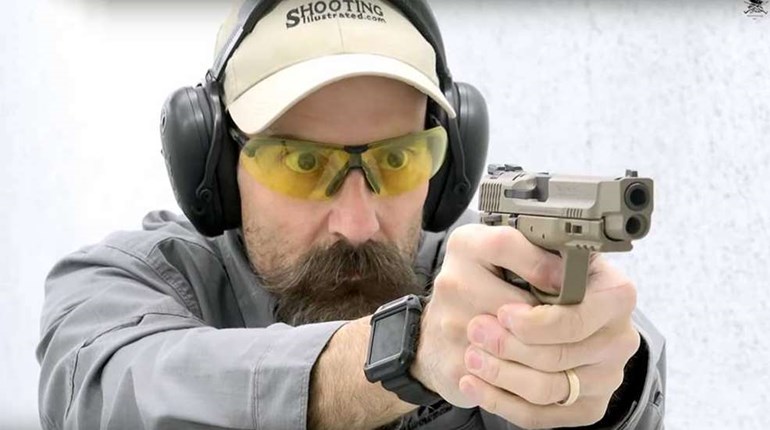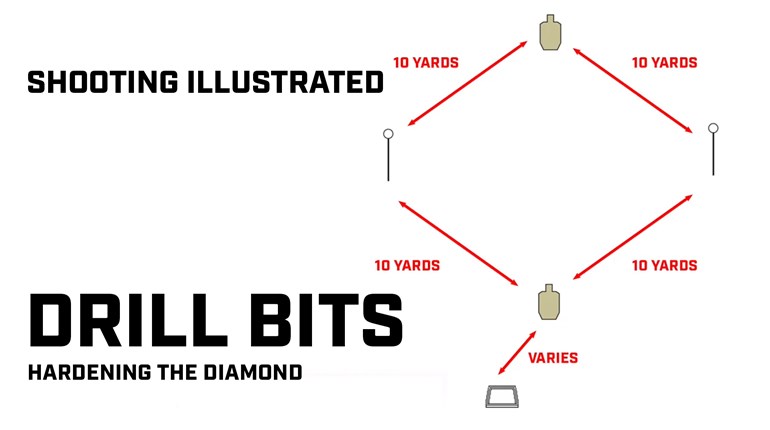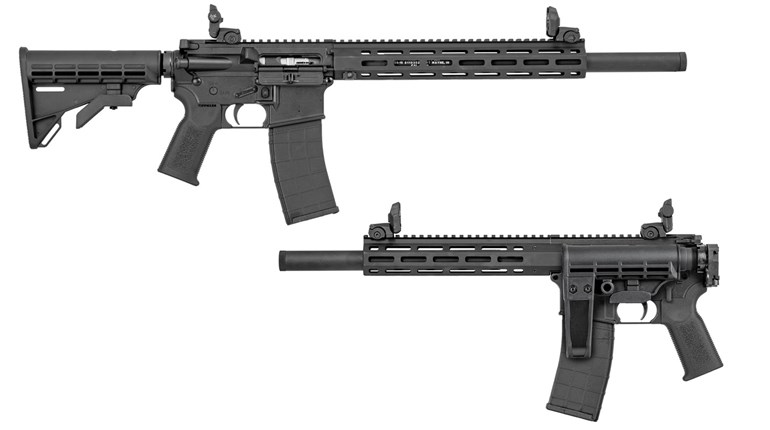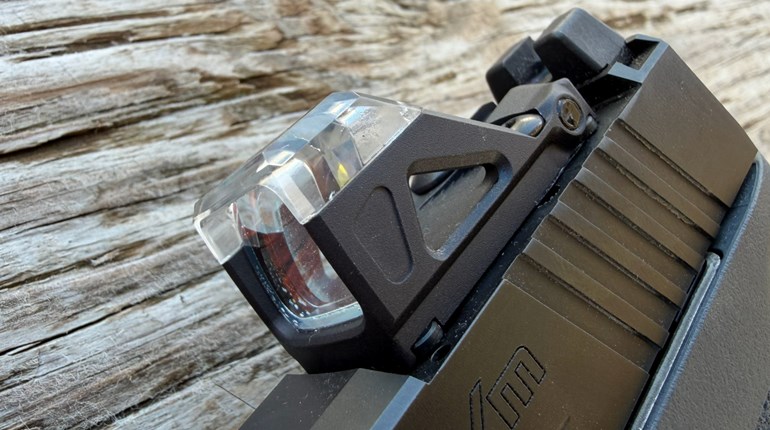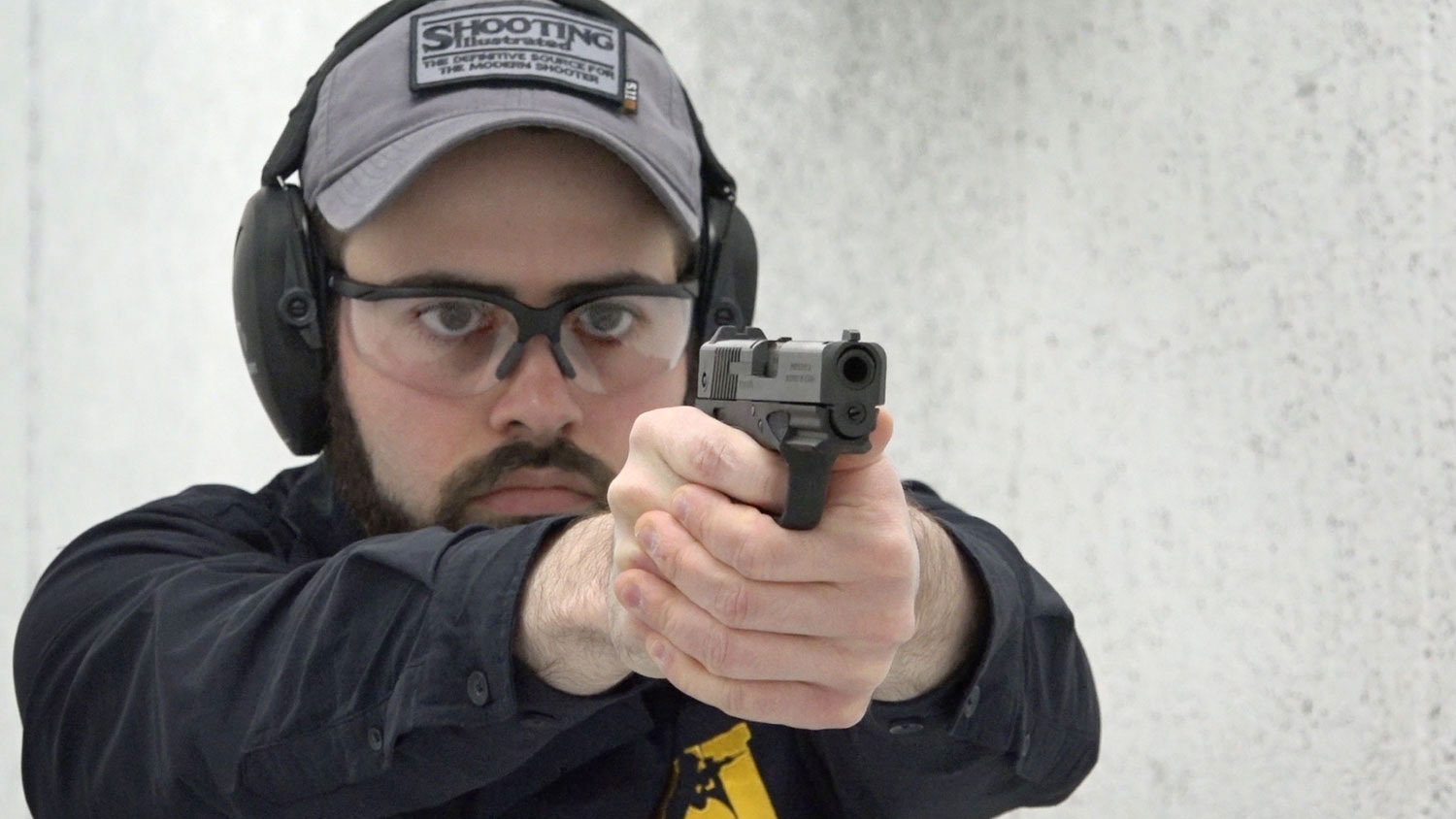
The basic premise of focused training for combat or competitive shooting lends itself to performance training—the art of shooting well—across the board. Regardless of your goal, whether it's meeting your agency's qualification standards, passing industry-specific requirements or excelling in USPSA, IPSC or IDPA competitions, the key is continuous improvement through training.
At its core, shooting a gun is so simple a physical movement that it can be taught to an orangutan [Editor's note: Do not do this. Seriously]. On your first day at the range as an entry-level novice shooter, you can point the gun at the target, press the trigger, and hit it. However, there is a significant difference between being a day-one, entry-level shooter and an internationally-ranked world champion.
In the early stages of entry-level training, the focus is on mastering the fundamentals and progress can be made rapidly. Most law enforcement and government training programs, as well as other institutionalized programs of instruction, cover the essentials and can prepare you for basic qualifications within a short time period. However, if you aspire to achieve more than what your agency offers, you will need to seek outside training.
Accomplished shooters can make moderate gains with longer training periods, while those aiming for extraordinary performance will make smaller gains at the cost of a considerable amount of time and effort. The higher your aspirations, the more training volume is required to achieve the desired level of improvement.
Training to become an exceptional shooter can be both an art and a science. The art aspect involves subjective expression, while the science offers four modes of training derived from the world of shooting performance: Bracketing, Modality, Dialing, and Imprinting.
Bracketing
Bracketing involves setting performance margins on both sides and working on improving performance within that range. Renowned shooters like multiple world champion Rob Leatham and Grandmaster Travis McCamish utilize a "left" and "right" margin approach.
To practice bracketing, select a specific subset skills drill, such as transitioning from one target to another, and perform it beyond your current skill level—either by challenging accuracy requirements, speed requirements, or both. Record your times and hits.
Then, perform the drill within your current skill level to guarantee hits. The maximum speed and slowest speed achieved become your left and right margins. Finally, try running the drill at speeds in between the margins, progressively bringing the margins in more toward the higher performance.
Modality
Modality training, as advocated by Grandmaster A.J. Zito and others in the competition training community, involves varying modalities of performance shooting: Accuracy Mode, Speed Mode and Match Mode. In each training mode, you run a similar subset skills drill.
Accuracy Mode focuses on precision and consistency, ensuring that every shot is delivered with utmost accuracy. Shooters slow down their pace, emphasizing precise sight alignment, trigger control, and follow-through. By striving for 100-percent accuracy, shooters develop the discipline necessary for consistent performance.
Speed Mode challenges shooters to push their limits and increase speed. It involves executing the same drill or technique at a pace that surpasses their ability to guarantee predictable accuracy. This mode helps shooters build speed, improve reaction time, and enhance their ability to make quick and accurate decisions under pressure. It trains shooters to balance speed and accuracy, gradually increasing their overall shooting performance.
Match Mode bridges the gap between Accuracy Mode and Speed Mode. It replicates the conditions of a competitive match, where shooters need to balance speed and accuracy simultaneously.
In this mode, shooters aim to achieve a balance between the two, ensuring that they complete the course of fire within the required time while maintaining acceptable levels of accuracy. Match Mode allows shooters to apply their skills in a competitive environment, where the pressure and dynamic nature of the match challenge their abilities.
Dialing
Dialing, a technique supported by retired SWAT Commander and senior law enforcement firearms instructor Mike Armentrout and others, involves refining your performance, gradually.
Like adjusting a rheostat, you run the same drill at least three times consecutively, shaving off a tenth of a second (or another predetermined measurable amount) with each run. This approach demonstrates control over both speed and accuracy.
Dialing focuses on refining performance through incremental gains. By repeatedly running the same drill, shooters can gradually reduce the time it takes to complete the task while maintaining overall control and the integrity of their shooting fundamentals.
This approach allows shooters to identify areas for improvement, make subtle adjustments to their technique, and find greater efficiency. By gradually dialing in their skills, shooters can fine-tune their performance and enhance their overall shooting capabilities.
Imprinting
Imprinting, promoted by retired U.S. Army Special Forces tier-one government asset and competition Grandmaster Instructor Frank Proctor, emphasizes starting with correct techniques and ingraining perfect form from the beginning.
Dry-fire practice, highly valued by Proctor and many other Grandmasters, is an essential imprinting tool. Proctor’s skills development motto is "Train to Perfection," emphasizing the importance of deliberate, purposeful, and mindful training to develop comfortable, fluid, and repeatable performance.
Imprinting emphasizes the importance of starting with correct techniques and building a strong foundation. Dry fire practice plays a significant role in this training method, allowing shooters to develop essential skills without live ammunition.
Through deliberate and mindful practice, shooters can imprint correct movements, develop proper grip, neutral body position, rapid sight alignment, and trigger control. This method helps shooters develop neural pathways that support consistent and repeatable performance.
By incorporating these varied training modes and exploring others, you can continuously improve your shooting skills towards your desired level of performance. Each of these training modes offers a unique approach to skill development, allowing shooters to push their limits and make progress.
Incorporating varied modes such as Bracketing, Modality, Dialing, and Imprinting, you can elevate your shooting skills to exceptional levels. These modes further enable you to challenge your limits, refine your technique, and build a solid foundation for consistent performance.













